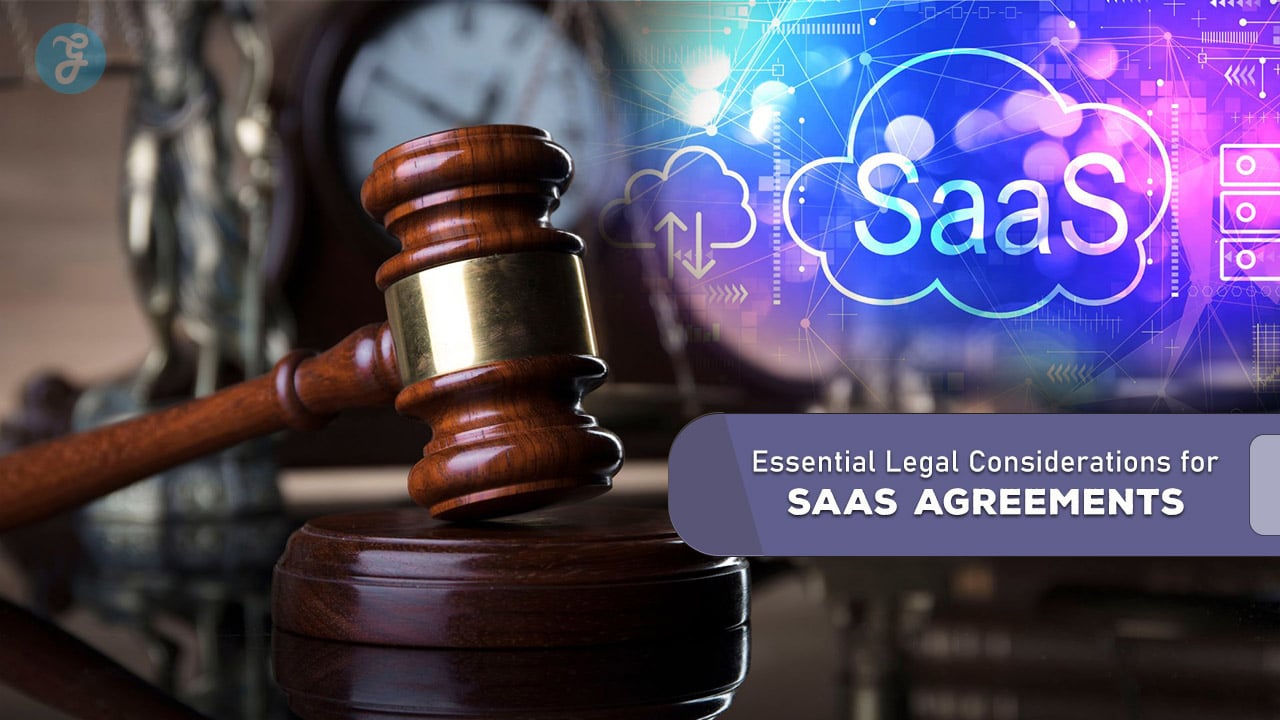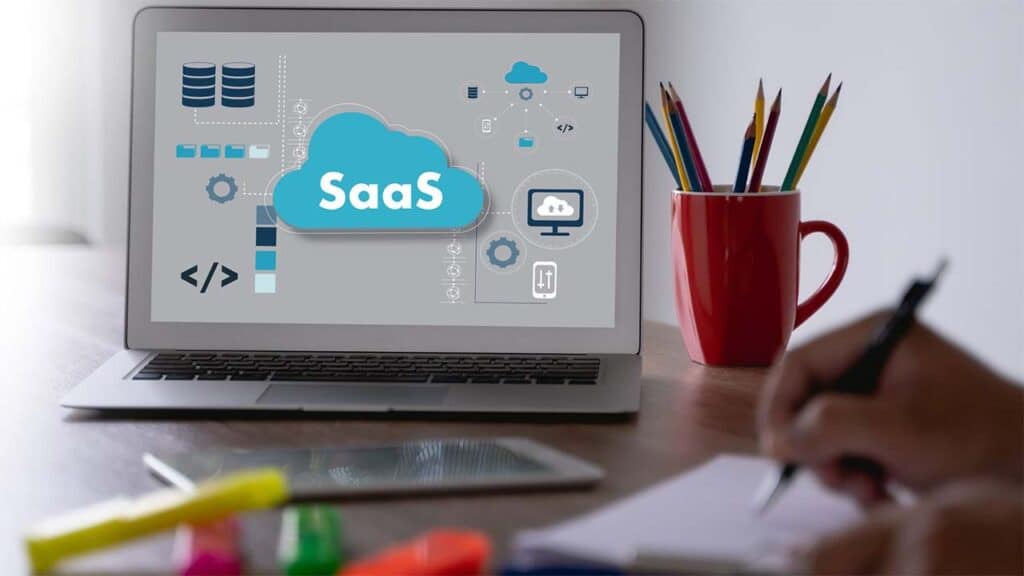SaaS agreements are crucial for businesses using cloud-based software. These contracts set the rules for how companies can use the software and what the provider must do. They cover things like data security, service uptime, and user limits.
Understanding the key legal points in SaaS agreements can save you time and money. By knowing what to look for, you can avoid problems down the road.
This article will explore ten essential legal considerations for SaaS contracts. You’ll learn what matters most when signing up for cloud software services.
1. Data Ownership Rights
Who owns the data in a SaaS agreement? This is a crucial question you need to address. Data ownership rights determine who controls and can use customer information.
In most cases, customers own their data. You should clearly state this in your SaaS contract. Specify that customers retain ownership of all data they input or generate while using your software.
As a SaaS provider, you need access to customer data to deliver your service. Your agreement should outline your rights to use this data. Be specific about how you’ll use it and for what purposes.
Consider including provisions for data portability. This allows customers to retrieve their data if they end the service. It builds trust and complies with some data protection laws.
Be clear about what happens to customer data when the contract ends. Will you delete it immediately? Is there a grace period for the customer to download their information?
Don’t forget about derived data. This is new data your system generates from customer information. Decide who owns this and include it in your agreement.
Address data privacy and security too. Explain how you’ll protect customer information from unauthorized access or breaches.
2. Service Level Agreements (SLAs)
Service Level Agreements (SLAs) are a key part of SaaS contracts. They set clear expectations for how the software will work. SLAs spell out things like uptime, performance, and support.
You should look for high uptime guarantees in your SLA. Many providers offer 99.9% uptime. This means the software will be available almost all the time. Make sure the SLA defines what counts as downtime.
Performance metrics are another important part of SLAs. These might include response times or data processing speeds. The SLA should state exactly how these will be measured.
Support is also covered in SLAs. This includes how quickly the provider will respond to issues. It may also set rules for when and how you can get help.
Good SLAs have clear consequences if the provider fails to meet the agreed standards. This often involves credits or refunds. The size of these should match the impact of any service problems.
Be careful about maintenance schedules in your SLA. The provider needs time to update and fix the software. But this shouldn’t interfere too much with your use of the service.
Make sure your SLA fits your specific needs. What’s most important for your business? Focus on those areas when reviewing the agreement.
3. Intellectual Property Clauses
Intellectual property (IP) clauses are key parts of SaaS agreements. They protect both the provider and customer.
SaaS providers own the software and related IP. You need to make this clear in your agreement. State that you’re giving customers access to your servers, not delivering software to them.
Outline what rights you’re granting to customers. This usually includes a license to use the software for business purposes. Be specific about what customers can and can’t do with your IP.
Address any custom features or integrations. Who owns these? Will you have rights to use them for other customers?
Don’t forget about customer data. Your agreement should say who owns this data. It’s usually the customer. Explain how you’ll handle their data during and after the contract.
Include provisions for protecting trade secrets. This applies to both your secrets and your customers’. Set rules for keeping sensitive info private.
Think about trademarks too. Can customers use your logo or brand name? If so, how? Spell out the terms clearly to avoid misuse.
Consider what happens if someone claims your software infringes their IP. Will you defend the customer? Include an indemnity clause to address this.
Lastly, decide what IP rights customers keep if the agreement ends. Can they access their data? For how long? Clear terms here can prevent future disputes.
4. Confidentiality Obligations
Confidentiality is crucial in SaaS agreements. You need to protect your sensitive information and trade secrets. The agreement should clearly define what counts as confidential.
Both parties must agree to keep certain data private. This includes customer information, business plans, and technical details. The contract should spell out how long this secrecy lasts.
You should outline steps to safeguard confidential data. This may include limiting access and using secure storage. The agreement can also ban sharing secrets with others.
It’s important to state what happens if confidentiality is breached. You might include penalties or the right to seek legal action. Make sure the terms are fair for both sides.
Consider adding exceptions to confidentiality rules. These could cover publicly known information or data shared with legal approval. You may also need to disclose some info to follow laws or court orders.
Think about how to handle confidential info when the contract ends. You might require its return or destruction. Be clear about any ongoing duties to keep things secret after that point.
5. Limitations of Liability
Limitations of liability are a key part of SaaS agreements. They set limits on how much money a company might have to pay if something goes wrong.
You’ll often see these clauses capping damages at a certain amount. This could be tied to the fees paid for the service over a set time period.
Some types of damages may be excluded entirely. This might include things like lost profits or data loss. It’s important to review these exclusions carefully.
For SaaS providers, strong liability limits can protect against huge financial risks. But as a customer, you might want to push for higher limits or fewer exclusions.
Pay attention to how liability is handled for data breaches or security issues. These can be major concerns in SaaS relationships.
Negotiations often focus on finding a middle ground. You want to balance the provider’s need for protection with the customer’s desire for accountability.
Remember that liability limits might not hold up in all cases. In some jurisdictions, contracts cannot limit certain types of damages.
It’s wise to have a lawyer review these clauses. They can help you understand the potential risks and negotiate better terms.
6. Indemnification Provisions
Indemnification clauses are crucial in SaaS agreements. They protect you from financial losses caused by the other party’s actions or failures.
These provisions typically cover third-party claims. This means if someone sues you because of the SaaS provider’s product, the provider may have to pay your legal costs.
Look for clear language about what’s covered. Good indemnification clauses spell out specific scenarios, like intellectual property infringement or data breaches.
Be aware of limits on indemnification. Some agreements cap the amount a party must pay. Others exclude certain types of damages.
Pay attention to the process for invoking indemnification. Know how quickly you must notify the other party of a claim and who controls the defense.
Negotiate carefully. As a customer, try to get broad indemnification from the provider. If you’re the provider, aim to narrow your obligations.
Remember, indemnification goes both ways. You may need to protect the provider from claims arising from your use of their service.
Consider linking indemnification to insurance requirements. This ensures the indemnifying party can actually cover potential losses.
7. Termination Clauses
Termination clauses are crucial parts of SaaS agreements. They spell out how and when either party can end the contract.
You need to pay close attention to notice periods. These tell you how far in advance you must inform the other party if you want to terminate.
Look for terms about termination for cause. This lets you end the agreement if the other party breaks important rules.
Check if there’s a termination for convenience option. This allows you to end the contract even if nothing’s wrong, but may come with fees.
Watch out for auto-renewal terms. Some contracts automatically renew unless you cancel by a certain date.
Consider what happens to your data after termination. Make sure you can get your information back and that the provider will delete it.
Think about any ongoing fees or obligations after the contract ends. You don’t want surprise costs popping up later.
Termination clauses can affect your business long-term. Read them carefully and negotiate terms that protect your interests.
8. Governing Law and Jurisdiction
When signing a SaaS agreement, you need to pay close attention to the governing law and jurisdiction clauses. These terms determine which laws apply to your contract and where legal disputes will be resolved.
Typically, the service provider will want their local laws to govern the agreement. This can be problematic if you’re in a different country or state. You may want to negotiate for a neutral jurisdiction or one that’s more favorable to your interests.
Consider the practical implications of the chosen jurisdiction. If a dispute arises, will you be able to effectively pursue legal action in that location? Think about travel costs, language barriers, and unfamiliar legal systems.
Some agreements include arbitration clauses as an alternative to court proceedings. This can be faster and less expensive, but may limit your legal options. Make sure you understand the pros and cons before agreeing to arbitration.
Remember that governing law and jurisdiction can greatly impact your rights and obligations under the contract. It’s often worth consulting a lawyer to help you navigate these complex legal issues in your SaaS agreements.
9. User Data Privacy Terms
User data privacy is a big deal for SaaS companies. You need to spell out how you’ll handle customer information in your agreements. This builds trust and keeps you on the right side of the law.
Be clear about what data you collect. Tell users exactly what info you’re gathering and why. This might include names, emails, or usage patterns.
Explain how you protect user data. Describe your security measures in simple terms. This could mean encryption or regular backups.
Let users know who can access their data. Will your employees see it? What about third-party vendors?
Give users control over their info. Tell them how they can view, change, or delete their data. Make this process easy to understand.
Address data retention. How long will you keep user info? What happens to it when an account closes?
Mention any data sharing practices. If you share data with partners or advertisers, say so. Be upfront about it.
Include your policy on data breaches. Tell users how you’ll handle it if their info is compromised. Explain how you’ll notify them.
Keep your terms up-to-date with changing laws. The rules around data privacy are always shifting. Make sure your agreement reflects current regulations.
10. Renewal and Exit Policies
Renewal and exit policies are key parts of SaaS agreements. They spell out what happens when your contract ends.
Automatic renewal is common in SaaS deals. Your service might keep going unless you say stop. This can be good or bad. It keeps things running smoothly. But you might forget to cancel if you want to quit.
Look for clear rules on how to end your service. Good agreements tell you when and how to give notice. They also say what happens to your data when you leave.
Exit policies matter a lot. They should explain how to get your data out. Can you export it easily? Will the provider help? Make sure you know before you sign up.
Some SaaS deals have fees for leaving early. Check if there are any surprise costs. You don’t want to be stuck in a bad deal.
Think about what you’ll need when switching providers. Can you move your stuff to a new system? Good exit terms make this easier.
Remember, renewal and exit policies affect your long-term plans. Read them carefully. Ask questions if anything is unclear. It’s your right to know what you’re agreeing to.
Understanding Key Terms
SaaS agreements contain important legal terms you need to know. Learning these key terms helps you grasp the contract better and protect your interests.
Definitions and Clarifications
SaaS stands for “Software as a Service.” It means you get access to software over the internet instead of installing it on your own computer.
The “service provider” is the company offering the software. You, the customer, are often called the “end user” or “subscriber.
“Uptime” refers to when the software is working. “Downtime” is when it’s not available. Most SaaS contracts promise a certain percentage of uptime.
“Data” in SaaS agreements can mean different things. It might be information you put into the software or data the provider collects about how you use it.
“Intellectual property” covers things like copyrights and trademarks related to the software.
Commonly Used Legal Jargon
Force majeure” means events beyond anyone’s control, like natural disasters. It can excuse the provider from meeting some obligations.
“Indemnification” is when one party agrees to cover the other’s losses in certain situations.
“Limitation of liability” puts a cap on how much money a party can owe if something goes wrong.
“Confidentiality” or “non-disclosure” clauses keep sensitive information private.
Service Level Agreement” (SLA) sets out what level of service you can expect, like response times for support.
“Termination” spells out how and when the contract can end.
Final Thoughts
SaaS agreements are complex legal documents that are crucial in protecting service providers and customers in the cloud-based software industry.
By understanding and carefully considering the ten essential legal aspects discussed in this article – from data ownership rights to renewal and exit policies – businesses can significantly mitigate risks and ensure smoother operations.
Key takeaways include the importance of clearly defining data ownership and privacy terms, establishing robust Service Level Agreements (SLAs), protecting intellectual property, and setting fair liability limitations.
Additionally, well-crafted confidentiality obligations, indemnification provisions, and termination clauses are vital for safeguarding business interests.







































